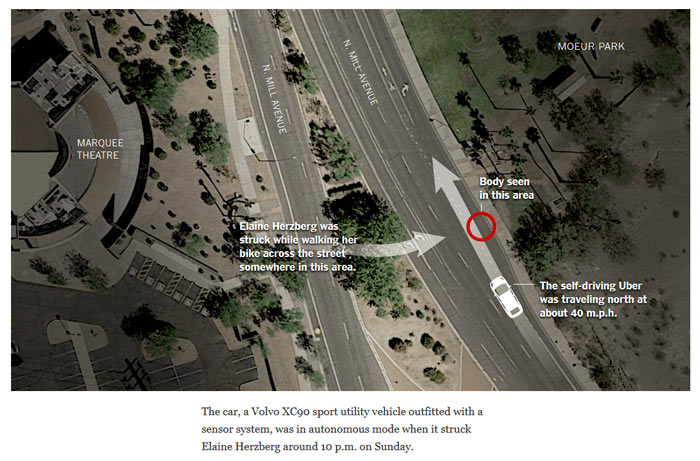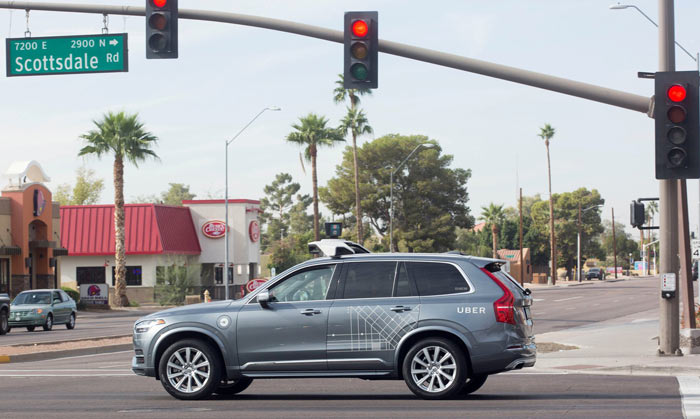Last week there was a widely reported fatality involving an autonomous vehicle in Arizona. A self-driving Uber car struck and killed a 49-year old woman pedestrian, Elaine Herzberg, even though it had an emergency backup driver present behind the wheel. Yesterday Uber was ordered to suspend autonomous vehicle testing and take all its self-driving cars off Arizona roads. Uber had actually already suspended testing in all cities immediately after the tragic accident last week. Now Intel's Mobileye has published a blog with observations shared concerning the state of autonomous vehicle technology.

Graphic from The New York Times
Prof. Amnon Shashua, SVP at Intel and CEO/CTO at Mobileye penned the opinion piece which suggests Uber was using inferior advanced driver assistance systems (ADAS) and automatic emergency braking (AEB) technology. Shashua hints that an Intel Mobileye equipped car would have seen and taken action a full second ahead of the collision, given the footage provided (below).
The above assertion is based upon running the car-cam footage from the Uber car through Intel autonomous driving systems. Importantly, the Mobileye boss and CTO reckons the Uber dash cam footage that was shared is of low quality and has been "subjected to some unknown downsampling". Obviously a clearer camera, combined with other sensors such as radar and LIDAR (extra useful in these dark conditions) could make the pedestrian detection that much quicker. Having multiple sensors independently monitor the same views is very important, not just for speed but for accuracy and safety.

Shashua also talks about transparency and the fragility of consumer trust. While every company working in this field states that "safety is our most important consideration," or very similar, Intel / Mobileye has backed up this with a mathematically defined formalism. "More incidents like the one last week could do further harm to already fragile consumer trust and spur reactive regulation that could stifle this important work," thinks the Mobileye boss and CTO. Ideally he would like to convene with all other tech companies working in the field, plus automakers, to solve the important issues together. Perhaps some measurable minimum safety standards can be derived and shared this way, doing more to prevent future accidents involving autonomous vehicles.






